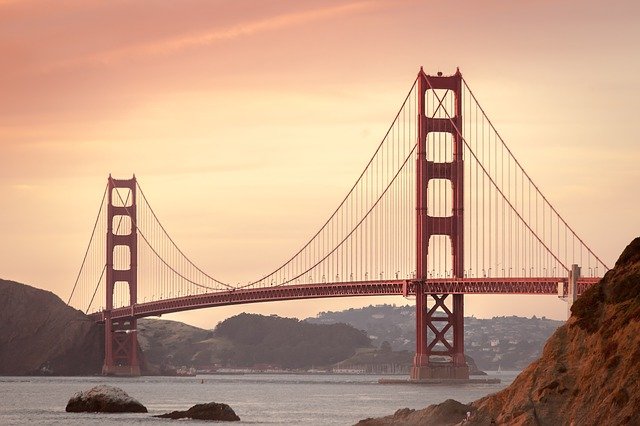By Tim Lambert
Early California
Human beings have lived in California since 10,000 BC. When Europeans arrived in the 16th century the native people lived in small villages. They lived on acorns and hunted animals like deer and rabbits. They also fished. The native peoples made baskets, some of which were so tightly woven they could hold water.
Europeans arrived in 1542 when Juan Cabrillo sailed to San Diego Bay. In 1579 Francis Drake anchored near San Francisco and claimed California for England. Then in 1602, Sebastian Vizcaino explored the coast of California.
However European settlement did not begin till the 18th century. Franciscan monks built a series of missions in California about 30 miles apart (one day travel on horseback). The first mission was built at San Diego in 1769. A pueblo or town was founded in Los Angeles in 1781.
Then in 1821, Mexico became independent from Spain. California became a territory of the new country. Unfortunately, Europeans brought diseases to which the native people had no immunity. They were decimated. In 1834 Mexico secularized the missions. That meant taking their land and selling it. By 1846 most of the land was owned by a small number of ranchers.
From 1846 to 1848 the USA and Mexico fought a war. When the war ended in 1848 Mexico formally surrendered California and it became a territory of the USA. Shortly afterward gold was discovered at Sutter’s Mill. Prospectors flocked to California and as a result, its population boomed.
On 9 September 1850, California became the 31st state of the union. The same year Los Angeles was incorporated and in 1854 Sacramento was made the state capital. In 1859 after the gold rush ended silver was discovered in California. Then in 1869, the first transcontinental railroad was completed making transport to and from the East much easier. From the 1870s the orange industry in California boomed as they could now easily be sent to other states.
Meanwhile, as more and more settlers arrived in California many battles were fought against the Native Americans. They were forced onto reservations and their numbers fell dramatically.
Modern California
Disaster struck on 18 April 1906 when an earthquake hit San Francisco. It measured 8.25 on the Richter scale and it caused great damage and loss of life. The fires that followed caused even worse damage. They raged for 3 days. Afterward, about 28,000 buildings were destroyed and 250,000 people were made homeless. The exact number of dead is not known. However, San Francisco was soon rebuilt.
Women in California were given the right to vote in 1911.
In the early 20th century the oil industry boomed in California. The filmmaking industry also boomed. Meanwhile, in 1913 Los Angeles Aqueduct was built. During the Depression of the 1930s large numbers of ‘Okies’ fleeing the Dust Bowl fled to California. Meanwhile, the Golden Gate Bridge was built in 1937.
During the Second World War California boomed again. After the war, many returning soldiers settled in California and suburbs sprang up around Californian cities. The 1950s were a decade of prosperity for California. Both industry and farming flourished and the population of the state rose rapidly. By 1962 California was the US state with the largest population.
The 1960s were an era of protest. In 1969 Native Americans occupied Alcatraz Island. Then in 1989, California was hit by another earthquake. Yet another earthquake struck the state in 1994.
Today California has an economy larger than that of most countries. In 2023 the population of California was 39 million.

Last revised 2025